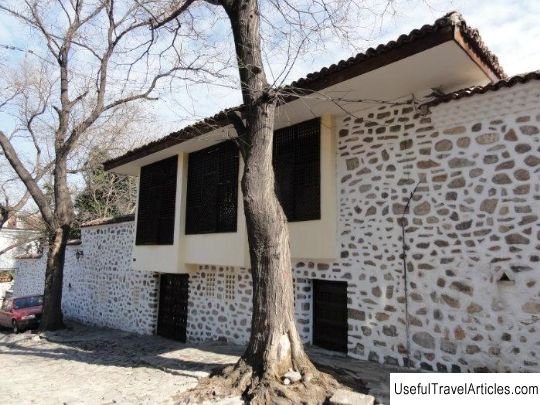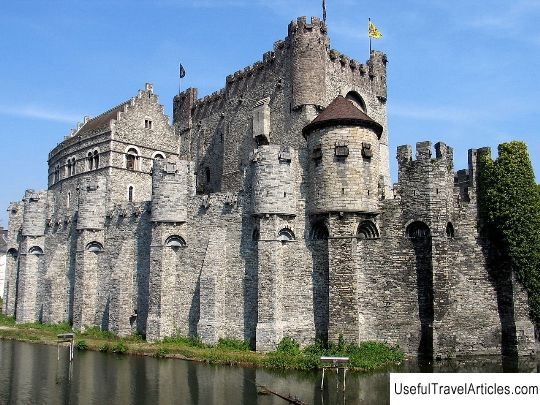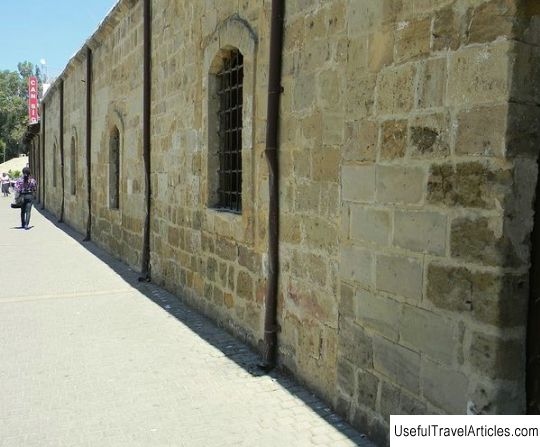Mevlevihane description and photos - Turkey: Antalya
Rating: 8,8/10 (6895 votes) 
Mevlevihane description and photos - Turkey: Antalya. Detailed information about the attraction. Description, photographs and a map showing the nearest significant objects. The name in English is Mevlevihane. Photo and descriptionOne of the best preserved buildings in the madrasah ensemble is the Mevlevihane building. Jelaleddin Rumi Mevlana & nbsp; - is a great Sufi poet and philosopher-humanist, whose teachings, developed in the XIII century, were adhered to by statesmen, respected and wealthy citizens. "Mevlana" translated from Arabic means "Our Lord". Jalaladdin Rumi died in Konya on September 17, 1273, but his mausoleum has survived to this day and is considered a holy place that pilgrims constantly visit. The building, erected during the time of the Seljuks, in the 18th century was given by the governor near Mevlevihan - a meeting place for admirers of Mevlevi philosophy. In the monastery, they comprehended the philosophy of Mevlana and underwent training in the main Mevlevi rite, which unites the philosophy of sound, word and action. Today it houses a gallery of modern art. In the courtyard of the mosque museum, there is a foot washing fountain. In the upper part of the building there are four domes, which are completely covered with red brick. According to Mevlana's will, the festival of dancing dervishes is held in Konya every December and is called Sheb-i-Aruz. Dervishes canonized the poet's habits, his manner of moving and dressing. Ritual " sema " (the dance of joy of the dervishes of the brotherhood) symbolizes the path of man's ascension to the abode of divine love. The dance is the personification of the mystical journey of the human spirit through consciousness and love for God. It was a mystical religious ritual in the Middle Ages, but nowadays it has another purpose - to entertain the public. This festival is considered one of the best in Turkey. Every year more than a million tourists come to the festival, each of whom strives to get to the main temple of the museum, where the main performances take place. Members of the mystical Sufi order of dervishes take part in the festival, striving to dance as close to Allah as possible ... People fill the stands of the indoor stadium, a choir and an orchestra are located at the main entrance, and an old mentor is in the arena, standing on a piece of red sheepskin. The novices in conical felt hats and black robes are located near the old man. It all starts with blows to the timpani, after which silence the hall is filled with the mournful sounds of her (like a flute). Gradually, other instruments join in, and the musical rhythm gradually becomes more intense, as if hypnotizing performers and spectators. At this moment, the dervishes throw off their black robes, and, remaining in white shirts, crossing their arms at their chest, approach the mentor, bow their heads on his shoulder, kiss his hand, after which, lining up in a column, turn around and bow to each other. It can be considered that the prelude to the ritual, which was born more than seven centuries ago, is over. The participants in the process begin to circle according to the command they know from their mentor. Literally from Arabic "dervish" is translated as "whirling". Their arms are spread out in opposite directions, and their heads are thrown back. They turn the palm of the right hand up, and the left - down. During the ceremony, the dervishes dance around the hall three times. The first circle means knowing God, the second is the vision of God and the third is the truth of unity. A boy is dancing with about three dozen adults, and it seems that there will be no end to this marvelous performance, but after ten minutes the whirlwind subsides and the dervishes kneel down, and then plunge into a magical dance again. This continues at least five times. According to the Turks, this is not a dance at all, but a mystical ceremony, during which the followers of the teachings of the medieval thinker and poet Rumi, who take part in the dance, fall into a trance. They raise their palms up in order to receive the blessing of God, and the palm facing downward should transmit it to the ground. The dance of the dervishes is one of the most impressive features in the mystical life of Islam, beginning with a long praise in honor of the Prophet (Jelaleddin himself wrote this hymn), accompanied by amazing beauty music of beauty and ending with short ecstatic songs. The festival was held under the auspices of UNESCO in 2006 to celebrate the eight hundredth anniversary of the birth of Jelaleddin Rumi. The Rumi Jubilee Medal was established by UNESCO.     We also recommend reading Sant'Agata de 'Goti description and photos - Italy: Benevento Topic: Mevlevihane description and photos - Turkey: Antalya. |




